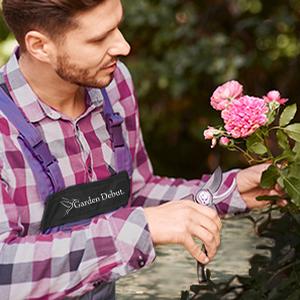Pruning can make plants more beautiful, increase flowering, provide for stronger limbs and growth, and can help in maintaining preferred size. Some plants may need to be pruned each year while other may never require pruning. Knowing when and how to prune is important for long-term success with any plant.
General Pruning
Pruning, in general, should be done before new growth appears and warm weather begins. Your plants will be less susceptible to disease and the energy saved can be directed to new growth and flowers. When pruning in late winter/early spring, remove any part of the plant that looks diseased, remove dead twigs and branches, and trim off suckers from the base of the plant.
Pruning Flowering Shrubs
Pruning for flowering shrubs should be based on when the plant flowers and whether it flowers on new wood/stems or old wood/stems.
Early spring flowering shrubs bloom on old wood/stems and should be pruned just after their flowering season. This will allow the summer growth to be more abundant and support the next early spring flowering. Summer flowering shrubs should be pruned in late winter or early spring before they begin to bud and grow. The flowers for these plants appear on newly grown stems and this pruning encourages more stem growth; therefore, more flowering in summer to fall.
Types of Pruning
-
Thinning Cuts: This type of cut removes an entire branch or limb all the way to its origin to create better air circulation or to reduce crowded conditions. Always make thinning cuts to just above a dormant bud. Remove up to one third of the stem and cut at a slight angle.
- Heading Cuts: This type of cuts shortens a branch or stem but doesn’t remove it entirely. Cutting off the dead flowers and foliage keeps the plant in good appearance and promotes the production of new flowers in the same season.
- Pinching: This action can be either a heading or thinning cut. Usually, you pinch soft growth between your thumb and forefinger. Pinching is handy with soft annuals and perennials, but also good for larger plants, if you do it early enough when their shoots are still young and soft. Any pruning done at this early stage is ideal because the plant suffers minimal harm and recovery is quick.
- Shearing: For this cut, use scissor like pruning shears to keep hedge lines straight and neat. Boxwood and yews are commonly sheared.
For more tips on caring for your specific Garden Debut® Plants, CLICK HERE, to find your plant's specifications.

